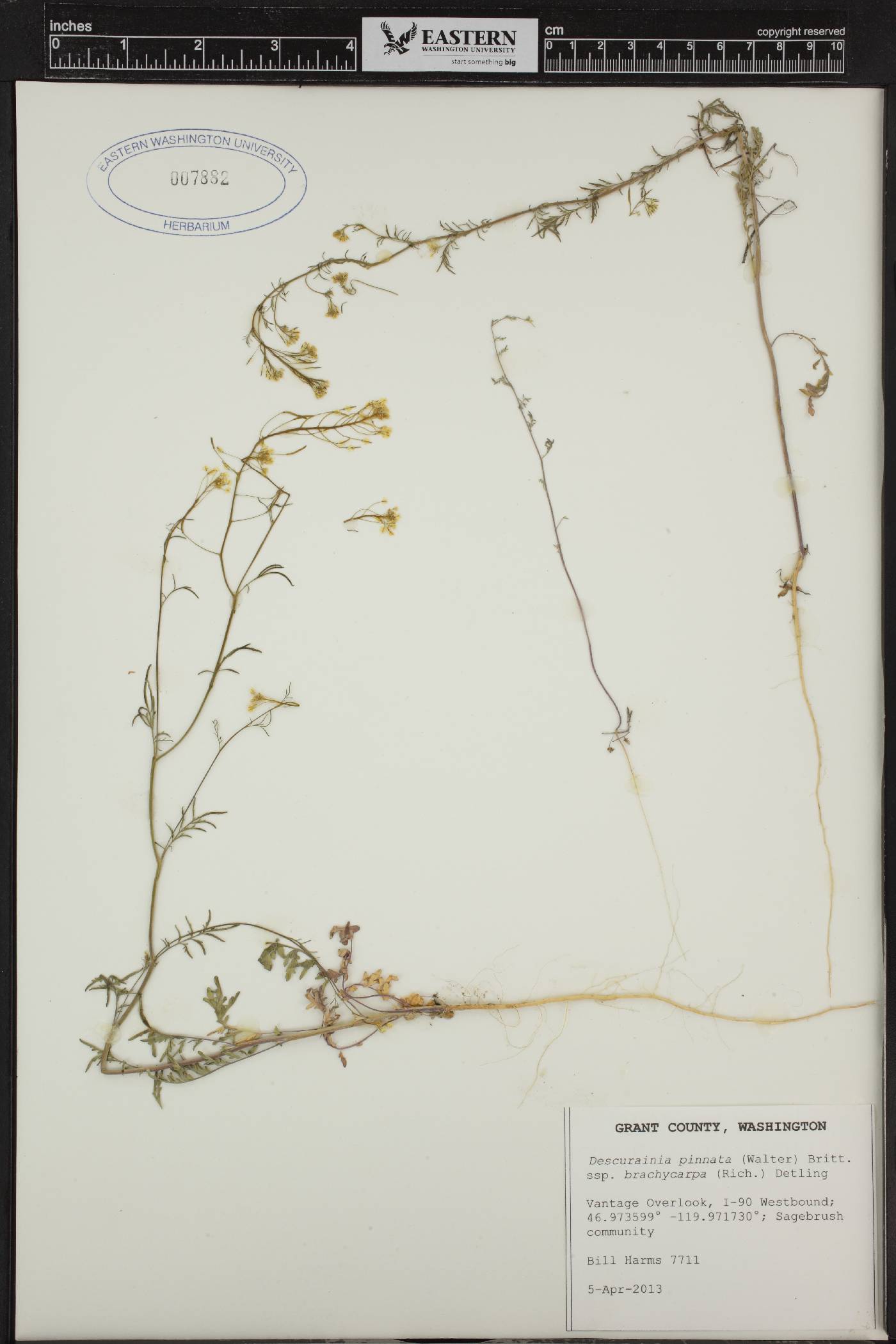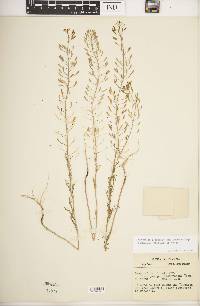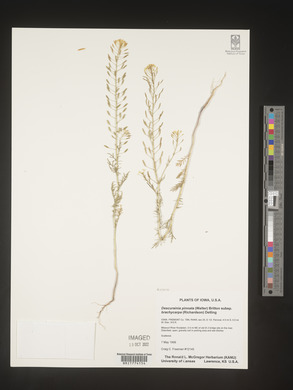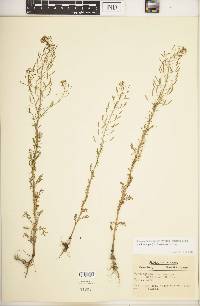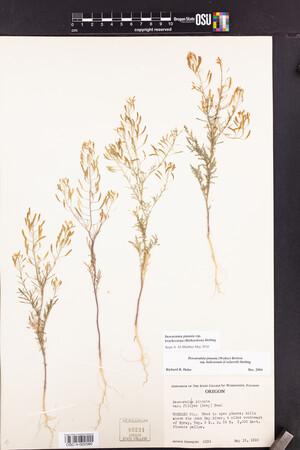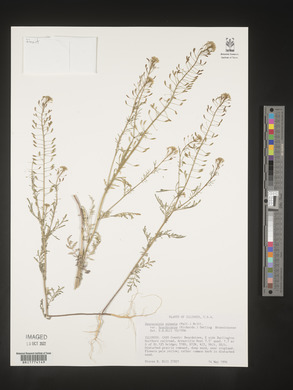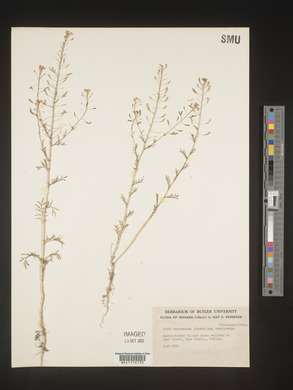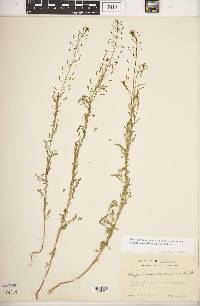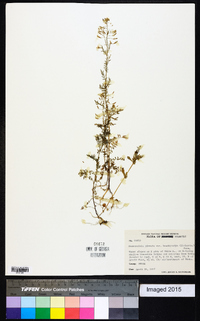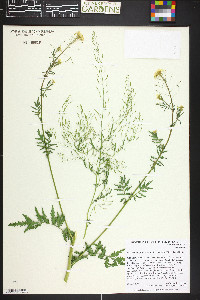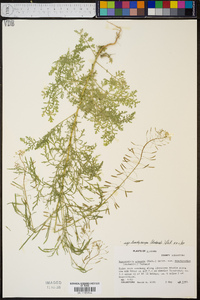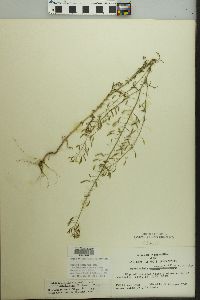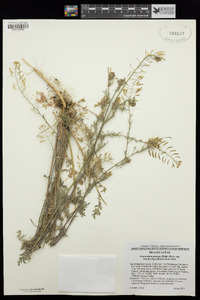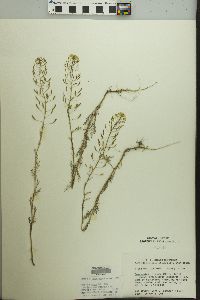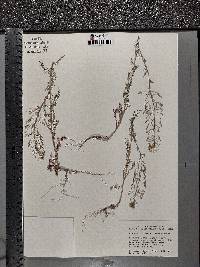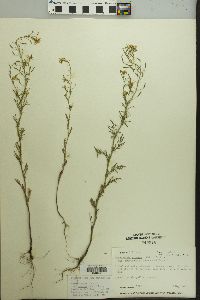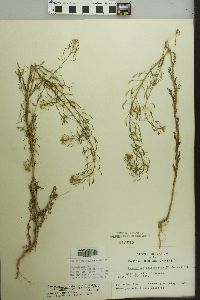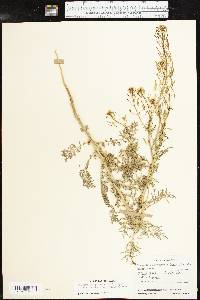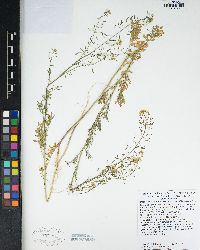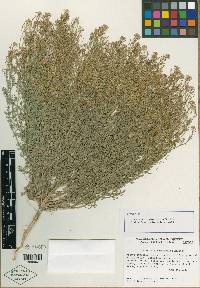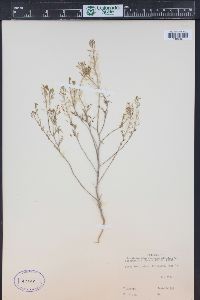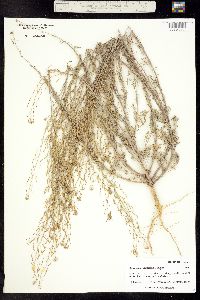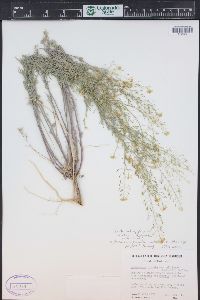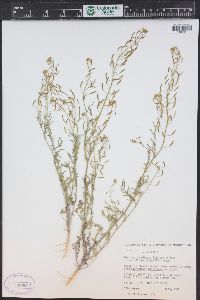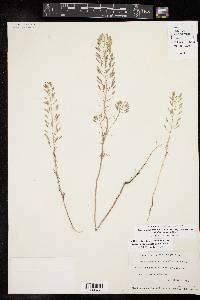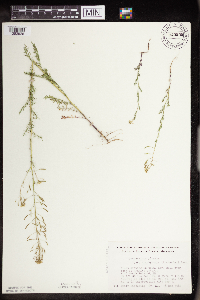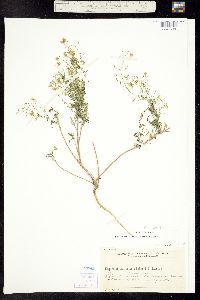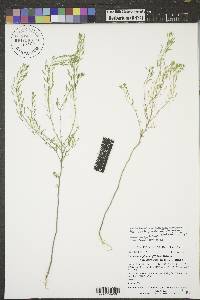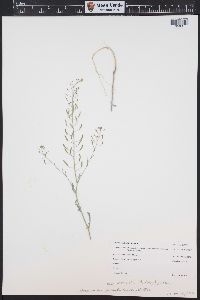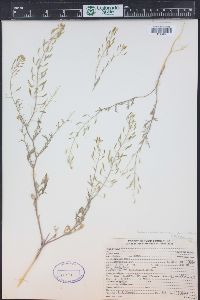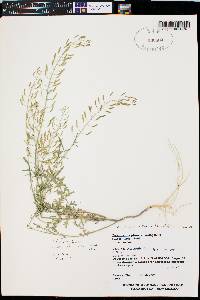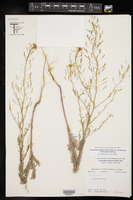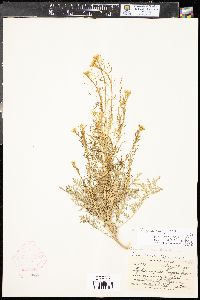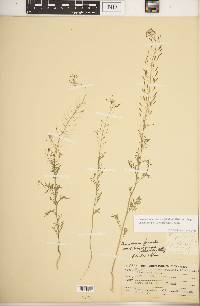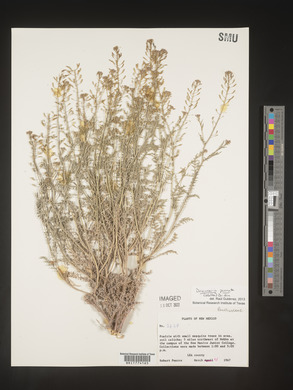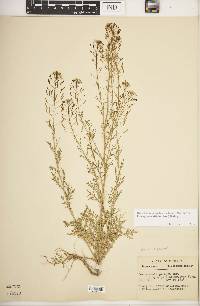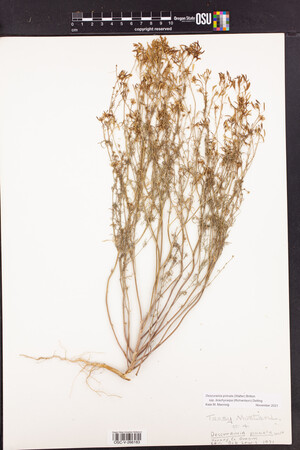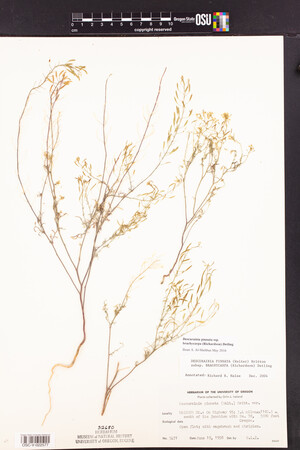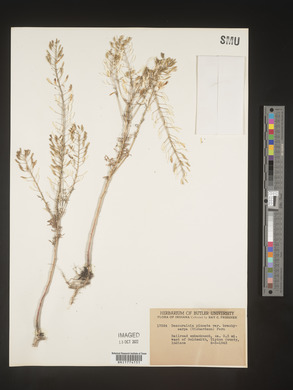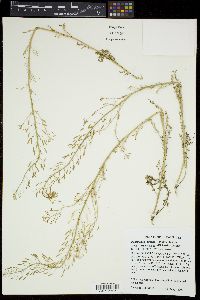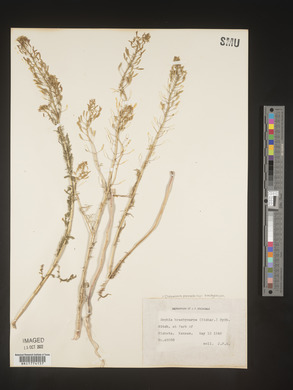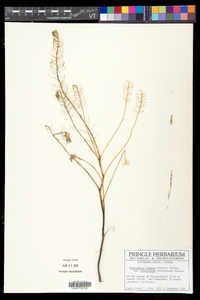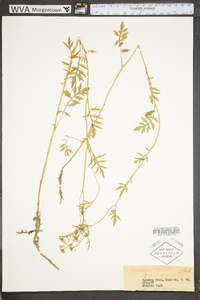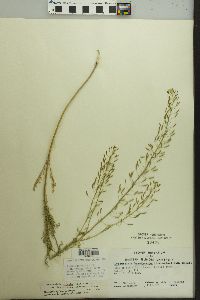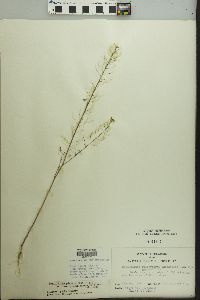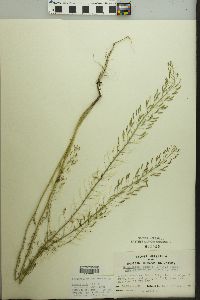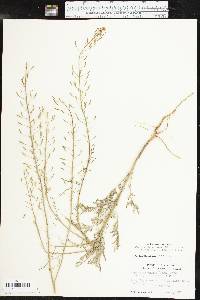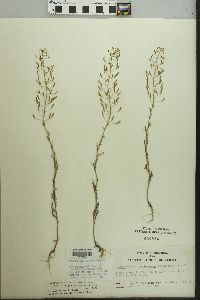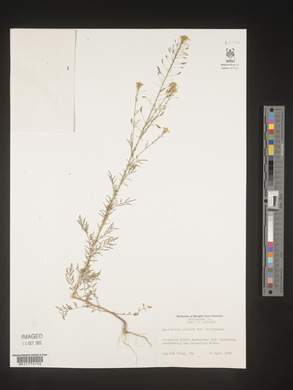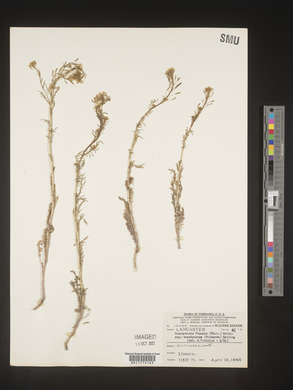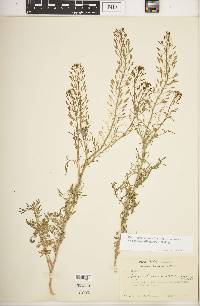
|
|
|
|
Family: Brassicaceae
Western Tansy-Mustard
[Descurainia ramosissima Rollins] |
Plants usually glandular, rarely eglandular, usually not canescent. Stems unbranched basally, branched distally. Racemes: rachis sparsely to densely pubescent, often glandular. Fruiting pedicels divaricate to ascending, forming 20-60(-80)º angle, (7-)10-18(-23) mm. Flowers: sepals yellow, 1.5-2.6 mm; petals (1.7-)2-3 × 0.6-1 mm. 2n = 14, 28. Flowering Mar-Jul. Roadsides, sagebrush and pinyon-juniper communities, disturbed sites, sandy fields, dry washes, limestone ledges, foothills, canyon margins, gravel washes, dry slopes, cliffs, streamsides, railroad tracks and embankments, prairies, sandy grounds; 100-2100 m; Alta., B.C., Man., N.W.T., Nunavut, Ont., Que., Sask.; Ark., Calif., Colo., Idaho, Ill., Ind., Iowa, Kans., Ky., Mich., Minn., Mo., Mont., Nebr., Nev., N.H., N.Y., N.Dak., Ohio, Okla., Oreg., S.Dak., Tenn., Tex., Utah, Vt., Va., Wash., Wis., Wyo. Except for having numerous instead of one or few stems from the base, Descurainia ramosissima is indistinguishable from D. pinnata subsp. brachycarpa in every aspect of indumentum, leaf morphology, flower size, seed size and arrangement, and fruit size and orientation. Plants of the type collections (Rollins et al. 8349, holotype GH, isotypes GH, MO) are infected with white rust, a fungus disease rarely encountered elsewhere in North American Descurainia. It is not known if this unusual branching is inherited or disease-related, but it should not be used as the main reason for recognizing a species separate from D. brachycarpa. Although subsp. brachycarpa is almost always glandular in the inflorescence, both glandular and eglandular forms are found in some populations. Cases in point are J. & H. Massey 1931 and Dunn 2 (both at TEX) that were collected from Cleveland and Caddo counties, Oklahoma, respectively.
Annual or biennial herb with a stout taproot 20 cm - 0.7 m tall Leaves: alternate, one to three times pinnately divided, stalkless, to 15 cm long, to 7 cm wide, becoming smaller upward and less dissected, oblong, hairy-glandular (some of the hairs branched). Leafstalks grooved above. Flowers: in a loose, branched cluster (raceme), which is borne terminally on a stem. Racemes to 30 cm long, hairy-glandular. Sepals four, egg-shaped. Petals four, yellow, small (flowers 2 - 4 mm wide), slightly recurved. Stamens six. Fruit: a pod (silique), upright or ascending, widely spreading, 6 mm - 1.3 cm long, 1 - 2 mm wide, three to eight times as long, club-shaped. Seeds in two rows in each chamber. Stems: usually multiple, upright, branched above, dense hairy-glandular (some of the hairs branched). Similar species: Descurainia sophia is similar but has longer pods, densely whitish-hairy (not hairy-glandular) stems, and leaves which are slightly more divided. Flowering: late April to mid-June Habitat and ecology: Apparently introduced into the Chicago Region from farther west. Occurs on limestone and sandstone cliffs, but frequently found along railroads. It has also been found growing as a roadside weed and a weed of sandy cultivated ground. Look for it in dry, open or sparsely wooded areas as well. Occurence in the Chicago region: non-native Etymology: Descurainia is named after the 18th Century French botanist and physician Francois Descourain (1658-1740). Pinnata means feather-shaped. Author: The Morton Arboretum From Flora of Indiana (1940) by Charles C. Deam Plants referred to this species are exceedingly variable and some authors divide the forms into varieties and species. I find no character that divides our Indiana specimens satisfactorily and I think it best to consider our forms as a species complex until further study of the group. I reported Descurainia intermedia for the state but I now refer the specimen to this complex. This species prefers very sandy soil and is generally found in railroad ballast. I have found it also on gravelly slopes and in very sandy soil in a creek bottom. It has doubtless been introduced into Indiana from the west. ...... Indiana Coefficient of Conservatism: C = null, non-native Wetland Indicator Status: n/a |

